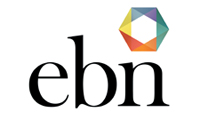
In the last week I have been asked the same question three times: How do I tell people about all my different services when I first meet them? My answer was the same: don’t.
Many companies have a business category, e.g. IT support, but this is made up of lots of products and services: hardware, security, etc. Tell people all that and you will see them glaze over and stop engaging with you. Don’t forget that networking is about building relationships, not overwhelming people to the point when they switch off.
My advice? There are two parts to this.
The first part is to tell people what your business category is. (Assuming you have said your name and company name.) Then you can say “We have lots of products and services”. You can, if you want, say “For example” and list two or three of the services, followed by “Today I’m focussing on helping people who need to have their cyber security reviewed”.
The second part: tell them a story. Think half a page, not War and Peace. As humans, we understand stories. Give it a beginning, a middle and an end. For example, “Cyber security is getting to be more and more of a problem”, throw in some stats if you must, and then “Recently we helped a firm of solicitors who had lost £250,000 because someone hacked …”. (This is not my area of expertise, so bear with me.) “We were asked to look at all of their systems and we found 5 ways of ensuring this kind of attack could not happen again, and we also put in place a system that will constantly keep the company protected.” ” So…this is the kind of help we want to give to others—do you know any solicitors who you would feel able to introduce me to?”
Then shut up and let them talk. One final thing: if you see people snuggling down for the night, you have spoken for too long. Refine the story.
If you would like some more tips on networking, go to ebn.uk.com and at the bottom right hand side you can download my top twenty tips.











Recent Comments